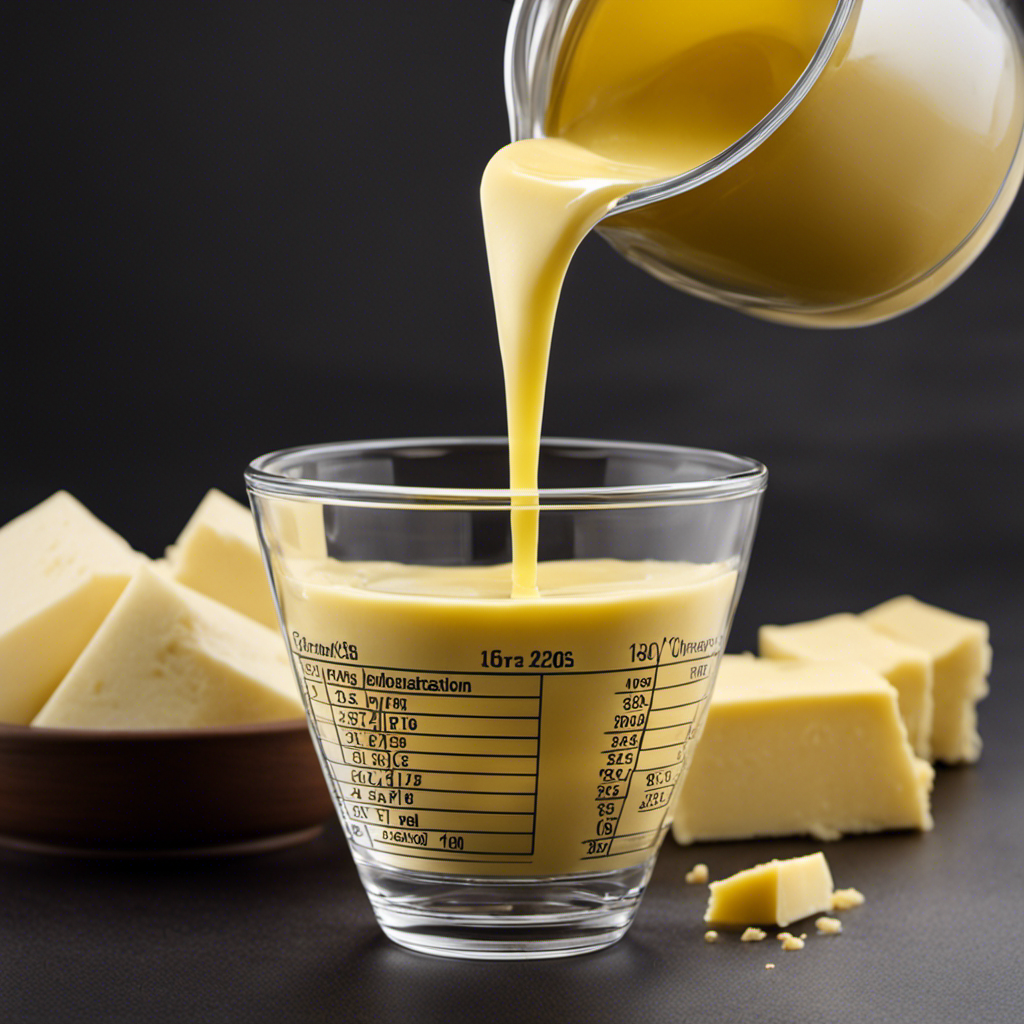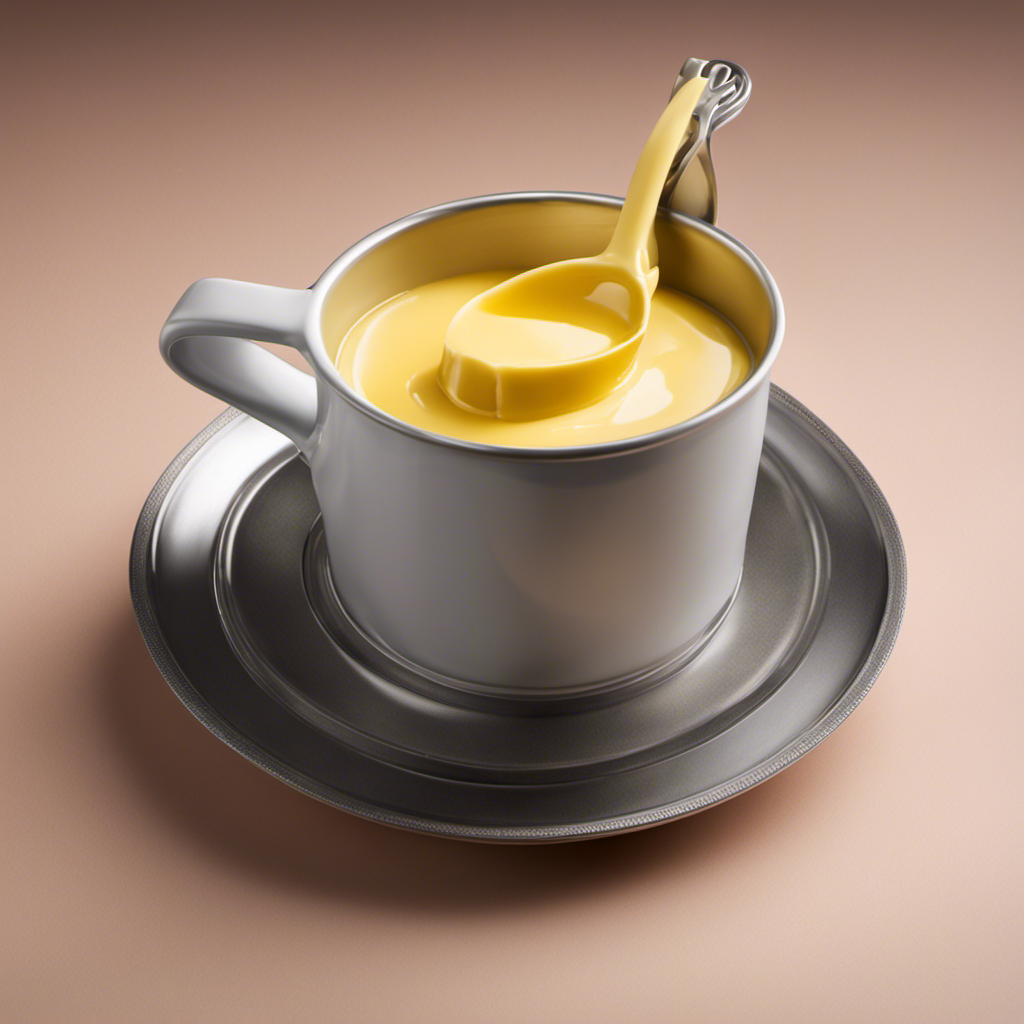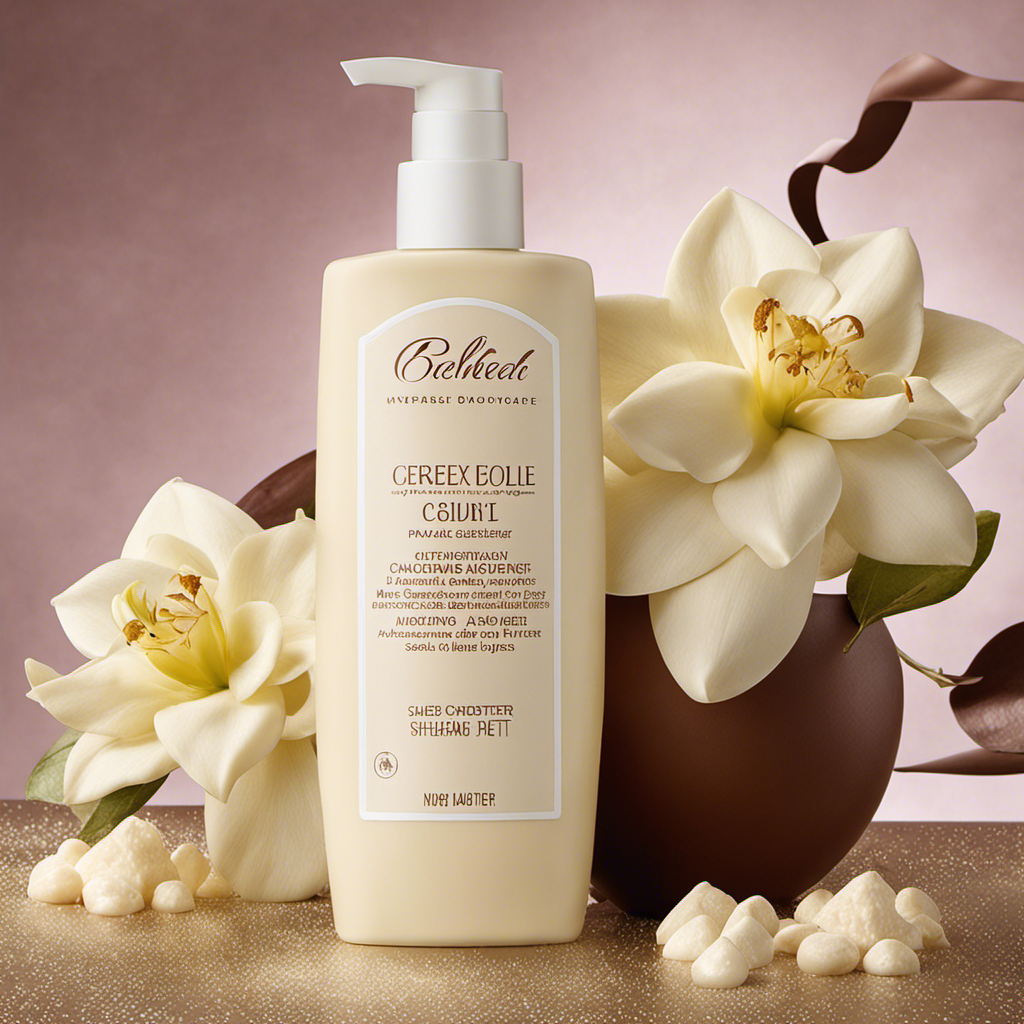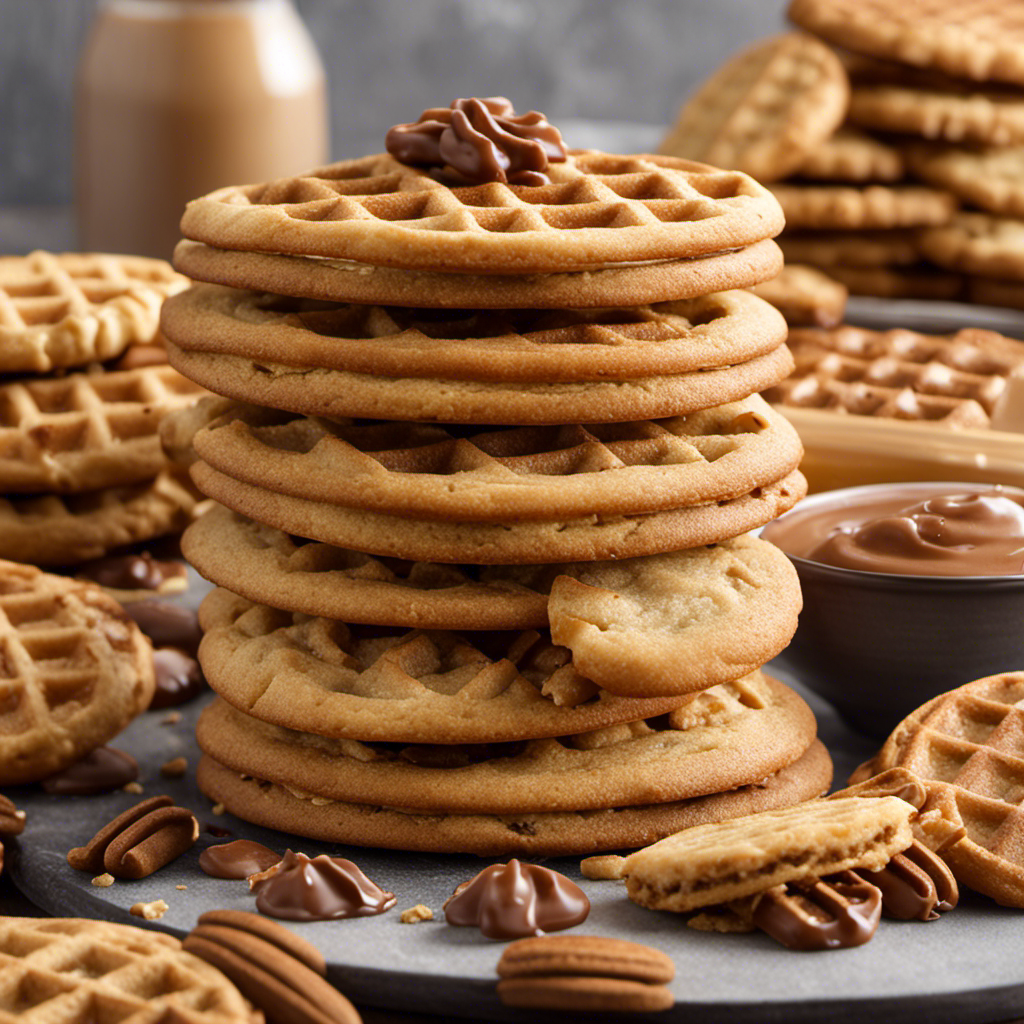As someone who loves food, I frequently find myself in the kitchen, ready to cook a tasty recipe only to discover that I am missing a key ingredient.
Today, let’s tackle the question that plagues many home cooks: how many tablespoons are in a half cup of butter?
Fear not, because I’m here to share the answer and guide you through accurate butter measurements.
Get ready to elevate your culinary creations and say goodbye to guesswork in the kitchen.
Let’s dive right in!
Key Takeaways
- There are 16 tablespoons in a 1/2 cup of butter.
- Converting tablespoons to grams can be done using a simple conversion factor of approximately 14 grams per tablespoon.
- Converting cups to tablespoons, one cup is equal to 16 tablespoons.
- Softening butter to room temperature before measuring ensures accurate results.
Understanding Tablespoon Measurements
I know that there are 16 tablespoons in a 1/2 cup of butter. When it comes to measuring butter accurately, tablespoons are a common unit of measurement.
However, if you’re following a recipe that requires grams instead, it’s important to know how to convert tablespoons to grams. To convert, you can use a simple conversion factor.
One tablespoon of butter is equal to approximately 14 grams. So, if a recipe calls for 4 tablespoons of butter, you can calculate that as 4 multiplied by 14 grams, which equals 56 grams.
This conversion helps ensure that you’re using the right amount of butter in your recipes, leading to delicious and consistent results. By understanding tablespoon measurements and being able to convert them to grams, you can confidently tackle any recipe that calls for butter.
Converting Cups to Tablespoons
To figure out how much butter is in a 1/2 cup, I can convert cups to tablespoons. Converting cups to tablespoons is a useful skill in the kitchen. One cup is equal to 16 tablespoons. So, if I’ve 1/2 cup of butter, I’d multiply 16 by 1/2, which gives me 8 tablespoons. This means that there are 8 tablespoons of butter in a 1/2 cup.
It’s important to know these conversions because many recipes provide measurements in cups, and it’s helpful to be able to convert them to tablespoons for more precise measurements. Additionally, knowing how to convert tablespoons to grams is also useful. One tablespoon of butter is approximately 14 grams. So, if I need to convert tablespoons to grams, I can multiply the number of tablespoons by 14 to get the equivalent weight in grams.
Calculating Tablespoons in a Half Cup of Butter
The conversion from cups to tablespoons reveals that half a cup of butter contains 8 tablespoons. When it comes to measuring butter accurately in recipes, it’s important to know the different measurements involved. Here are some key points to consider:
- Butter is often measured in cups or tablespoons, depending on the recipe.
- A cup of butter is equal to 16 tablespoons, so half a cup would be 8 tablespoons.
- Measuring butter accurately can be tricky, as it’s often sold in sticks or blocks rather than liquid form.
- It’s important to soften butter to room temperature before measuring, as it can affect the accuracy of the measurement.
- Using a kitchen scale can be a more precise way to measure butter, especially for recipes that require specific amounts.
Now that we know the conversion and some basic tips, let’s delve into some helpful tips for accurately measuring butter.
Tips for Accurate Butter Measurement
Softening the butter to room temperature before measuring ensures accurate results in recipes.
When it comes to measuring butter accurately, there are a few common mistakes that can easily be avoided. One of the most common errors isn’t using the correct measuring method. Many people just eyeball the amount of butter needed, which can lead to inconsistent results. It’s important to use the proper measuring tools, such as a measuring cup or a kitchen scale, to ensure precise measurements.
Another mistake is using cold butter straight from the refrigerator. Cold butter is harder to measure accurately, and it can also affect the texture and outcome of the recipe. By allowing the butter to come to room temperature, it becomes easier to measure and incorporates better into the other ingredients.
Common Conversions for Cooking With Butter
When measuring butter accurately, I find it helpful to know common conversions for cooking. Here are some key conversions to keep in mind:
- 1 stick of butter = 1/2 cup = 8 tablespoons
- 1/2 stick of butter = 1/4 cup = 4 tablespoons
- 1/4 stick of butter = 1/8 cup = 2 tablespoons
- 1 tablespoon of butter = 14 grams or 1/2 ounce
- 1 teaspoon of butter = 5 grams or 1/6 ounce
Using unsalted butter in baking is important because it allows you to control the amount of salt in your recipe. Salted butter contains added salt, which can affect the overall flavor of your baked goods.
If you don’t have butter on hand or prefer a dairy-free option, there are substitutes you can use in cooking and baking. Some common substitutes for butter include margarine, coconut oil, applesauce, and mashed bananas. These alternatives can add moisture and flavor to your dishes while still providing the necessary fats for baking.
Frequently Asked Questions
Can I Use Margarine Instead of Butter in Recipes That Call for Tablespoons of Butter?
Sure, you can use margarine instead of butter in recipes that call for tablespoons of butter. Margarine is a common substitute for butter in cooking and baking. However, keep in mind that margarine has a higher water content than butter, so it may affect the texture and flavor of your dish.
If you’re looking for a healthier alternative, you can also consider using oil instead of butter. Experiment and see what works best for your recipe!
What Is the Difference Between Salted and Unsalted Butter, and How Does It Affect the Measurement in Tablespoons?
When it comes to butter, one interesting statistic is that it contains essential vitamins like A, D, and E.
Now, let’s talk about the nutritional differences between salted and unsalted butter. Salted butter has salt added to it, which can affect the overall taste of your dish.
If a recipe calls for unsalted butter, you can determine the appropriate amount of salt to add by considering 1/4 teaspoon of salt for every 1/2 cup of unsalted butter.
Are There Any Alternative Ways to Measure Tablespoons of Butter if I Don’t Have a Measuring Spoon?
If you don’t have a measuring spoon, there are alternative ways to measure tablespoons of butter. One way is to use the measuring lines on the butter packaging. These lines usually indicate tablespoons, so you can measure accordingly.
Another option is to use a tablespoon-sized scoop or melon baller to portion out the butter.
And if you need to convert tablespoons of butter into cups, remember that there are 8 tablespoons in 1/2 cup.
How Do I Convert Tablespoons of Butter Into Grams or Ounces?
Converting butter measurements can be a bit tricky, but fear not! I’m here to help.
When it comes to converting butter to grams or ounces, it’s important to know that 1 tablespoon of butter is equal to 14 grams or 0.5 ounces.
So, if you’ve a recipe that calls for 1/2 cup of butter, you’ll need 8 tablespoons, which is equivalent to 112 grams or 4 ounces.
Now you can confidently measure your butter and get cooking!
Can I Substitute Oil for Butter in Recipes That Require Tablespoons of Butter?
Sure, you can definitely substitute oil for butter in recipes that require tablespoons of butter. When substituting butter for oil, it’s important to choose the right oil to ensure the best results.
Oils like canola, vegetable, or olive oil are commonly used as substitutes for butter. Each oil has its own unique flavor profile, so consider the taste you want to achieve in your recipe.
Experimenting with different oils can add a delicious twist to your dishes.
Conclusion
In conclusion, understanding tablespoon measurements is essential for accurate and successful cooking. Converting cups to tablespoons helps determine the proper amount of ingredients needed.
In the case of a half cup of butter, there are 8 tablespoons. It’s important to use precise measurements when working with butter to ensure the desired outcome of a recipe.
By following these tips and conversions, culinary enthusiasts can enhance their cooking skills and create delicious dishes.










